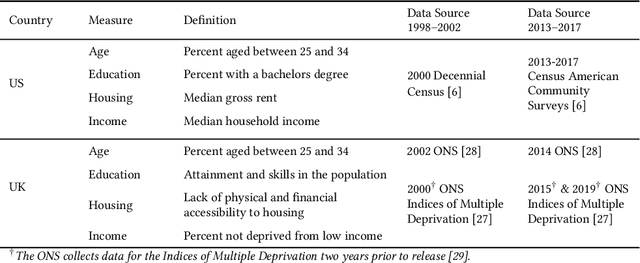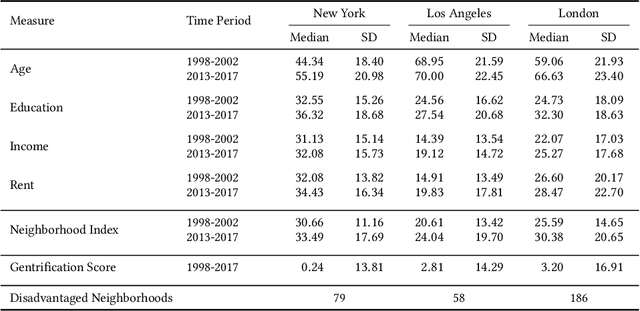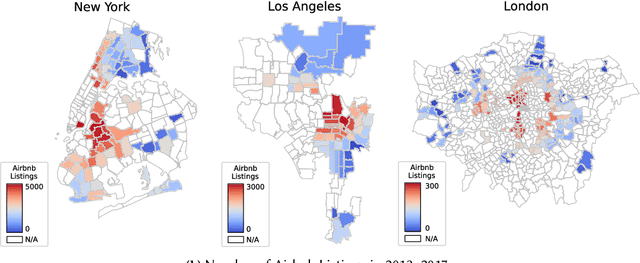Giovanni Quattrone
Nowcasting Gentrification Using Airbnb Data
Jan 18, 2021



Abstract:There is a rumbling debate over the impact of gentrification: presumed gentrifiers have been the target of protests and attacks in some cities, while they have been welcome as generators of new jobs and taxes in others. Census data fails to measure neighborhood change in real-time since it is usually updated every ten years. This work shows that Airbnb data can be used to quantify and track neighborhood changes. Specifically, we consider both structured data (e.g. number of listings, number of reviews, listing information) and unstructured data (e.g. user-generated reviews processed with natural language processing and machine learning algorithms) for three major cities, New York City (US), Los Angeles (US), and Greater London (UK). We find that Airbnb data (especially its unstructured part) appears to nowcast neighborhood gentrification, measured as changes in housing affordability and demographics. Overall, our results suggest that user-generated data from online platforms can be used to create socioeconomic indices to complement traditional measures that are less granular, not in real-time, and more costly to obtain.
Social Interactions or Business Transactions? What customer reviews disclose about Airbnb marketplace
Apr 24, 2020



Abstract:Airbnb is one of the most successful examples of sharing economy marketplaces. With rapid and global market penetration, understanding its attractiveness and evolving growth opportunities is key to plan business decision making. There is an ongoing debate, for example, about whether Airbnb is a hospitality service that fosters social exchanges between hosts and guests, as the sharing economy manifesto originally stated, or whether it is (or is evolving into being) a purely business transaction platform, the way hotels have traditionally operated. To answer these questions, we propose a novel market analysis approach that exploits customers' reviews. Key to the approach is a method that combines thematic analysis and machine learning to inductively develop a custom dictionary for guests' reviews. Based on this dictionary, we then use quantitative linguistic analysis on a corpus of 3.2 million reviews collected in 6 different cities, and illustrate how to answer a variety of market research questions, at fine levels of temporal, thematic, user and spatial granularity, such as (i) how the business vs social dichotomy is evolving over the years, (ii) what exact words within such top-level categories are evolving, (iii) whether such trends vary across different user segments and (iv) in different neighbourhoods.
 Add to Chrome
Add to Chrome Add to Firefox
Add to Firefox Add to Edge
Add to Edge